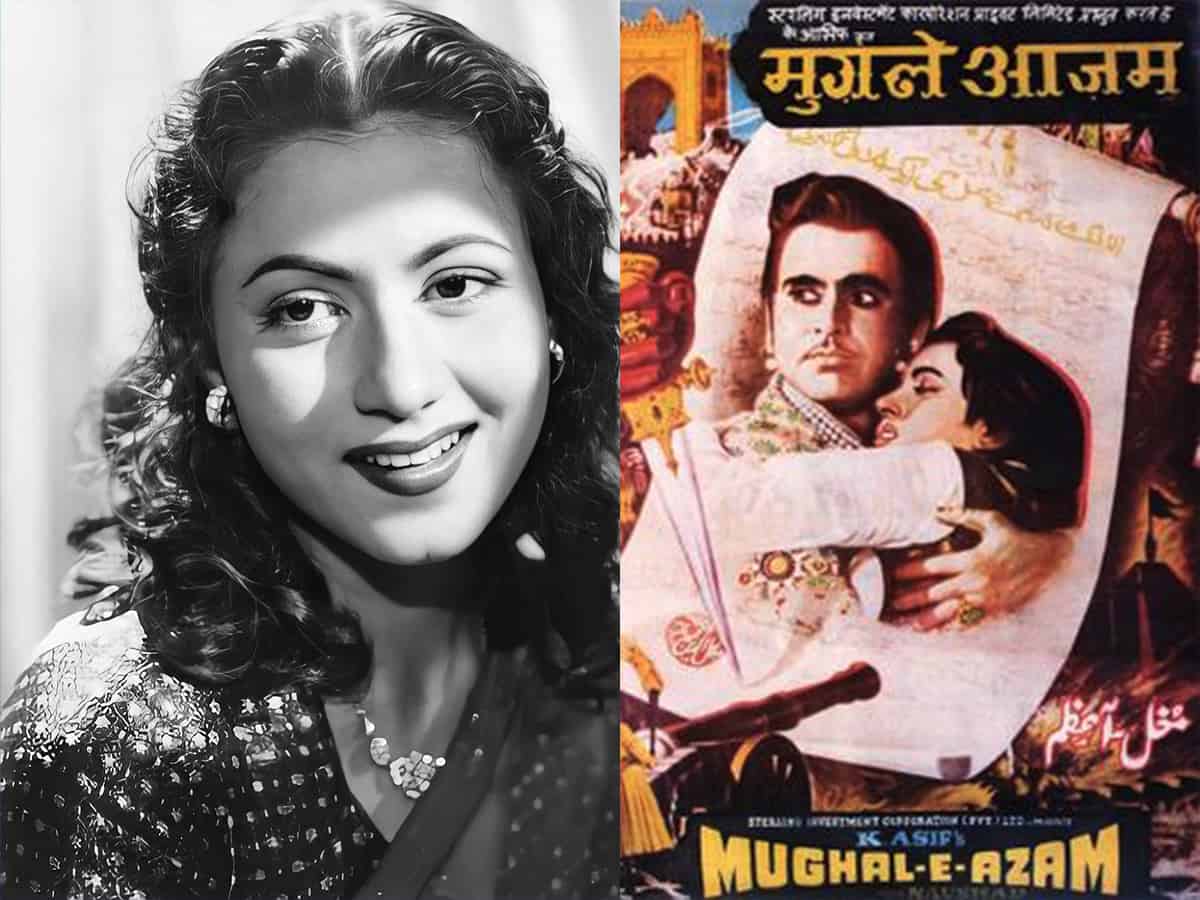
The epic film Mughal-E-Azam has risen again like the Phoenix of ancient Greek mythology and is holding the world audience as spellbound as it had done with the Indian audience in the past.
The Phoenix is an immortal bird in Greek mythology that is born again and again.
Recently the memories of the film came alive at one of the best known venues in the world. At New York’s Times Square spectators saw a moment of Bollywood magic and the place was taken over by a flash mob that danced to the lilting tunes of the song Jab Pyaar Kiya to Darna Kya.
The famous song has an unusual history to it. It cost one crore rupees to shoot at a time when an entire film could be shot for much less. It was written and revised no less than 105 times by the lyricist Shakeel Badayuni before the music director and composer Naushad approved of it. The set for the song was based on the Sheesh Mahal in Lahore fort.
Biggest set ever made
The particular set was massive in size. It measured 150 feet in length, 80 feet in width and 35 feet in height. There were countless small mirrors made of Belgian glass, which were crafted and designed by workers from Firozabad in UP who were specialists in this work. But even then the set took two years to construct. As the months passed by the makers got more and more worried about the rising costs.
The high costs gave rise to fears that the financiers of the film would become paupers if the film flopped. Only Asif displayed a rare courage and passion and charged ahead disregarding all apprehensions.
The idea of the film took birth in 1944 when K. Asif read a play called Anarkali written by Imtiaz Ali Taj. Asif’s original plan had been to cast an actor by the name of Chandramohan and the famous actress Nargis in the lead roles. But before the film could begin, Chandramohan died. Asif put his plans on hold for some time.
Later he began working on it again and finally, 16 years after he had thought of it, the film was completed.
Enchanting Madhubala
In every way the film depicted authenticity. The heavy chains that Madhubala had to wear in the film were real, not lightweight models. For her it was a great ordeal and she was bedridden for days, nursing the bruises caused by wearing those chains. Madhubala had extremely delicate and sensitive skin and the chains left marks on her for weeks after the filming. Her sister Shahida once said: “What can I say about her beauty? None of us came close to Aapa.”
When she signed the film, Madhubala was paid one lakh rupees which is a small amount these days for a star, but at that time it was the highest amount ever paid to a top actress.
Many years later Dilip Kumar revealed that Asif wanted to capitalise on the emotional involvement between himself and Madhubala so as to bring reality to the screen. But he said that many of the romantic scenes were shot when the two of them were in a highly frictional stage of their relationship and were not even speaking to each other. But on screen everything appeared extraordinarily true.
Specialists came from different corners of India
This was the most expensive film ever made in Indian history. Tailors were brought from Delhi to stitch the costumes, specialists from Surat were employed for the embroidery, Hyderabad goldsmiths made the jewellery, Kolhapur craftsmen designed the crowns, Rajasthan ironsmiths crafted the weapons, and the elaborate footwear came from Agra.
Indian Army soldiers fought in the battles
Amazingly Asif who was a perfectionist in every aspect of filmmaking, even brought in soldiers of the Indian army to enact the battle scenes. There were 8000 extras who were involved in the battles and many of them were real life army men. For the battles, 2000 camels and 4000 horses were also used. These animals had to be properly fed and housed in stables and this too sent costs skyrocketing.
It was the Titanic of the film world
But in the end we must doff our hats to Asif who conceived this grand spectacle and to those who helped him. The film was like the Titanic of the film world. On its maiden voyage to the USA, the Titanic sank to the bottom of the sea. But Mughal-E-Azam sails on even today. With its sails billowing in the wind, the film has traversed the oceans and reached the shores of America to make the people aware of the glorious history and culture of India.



